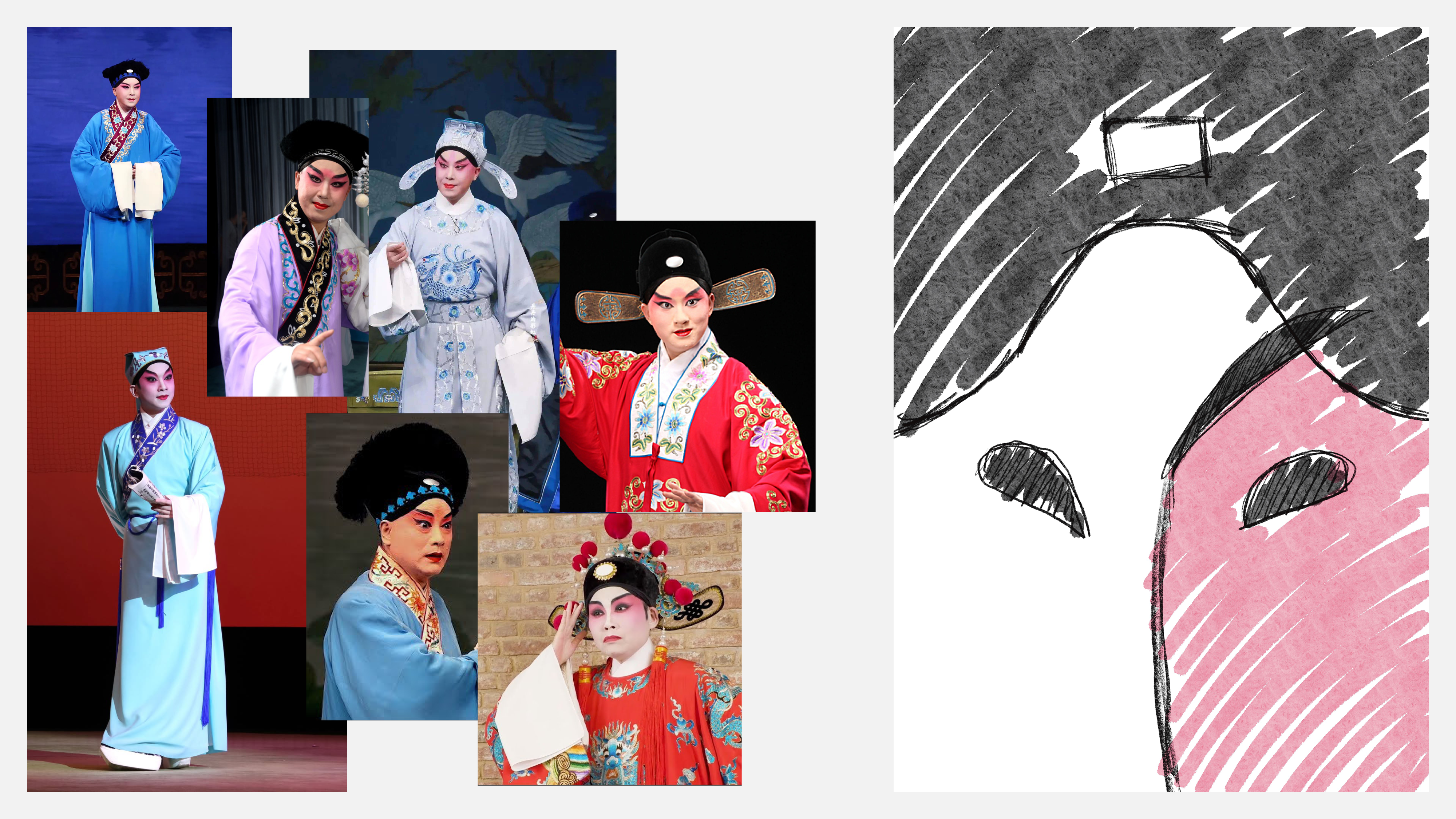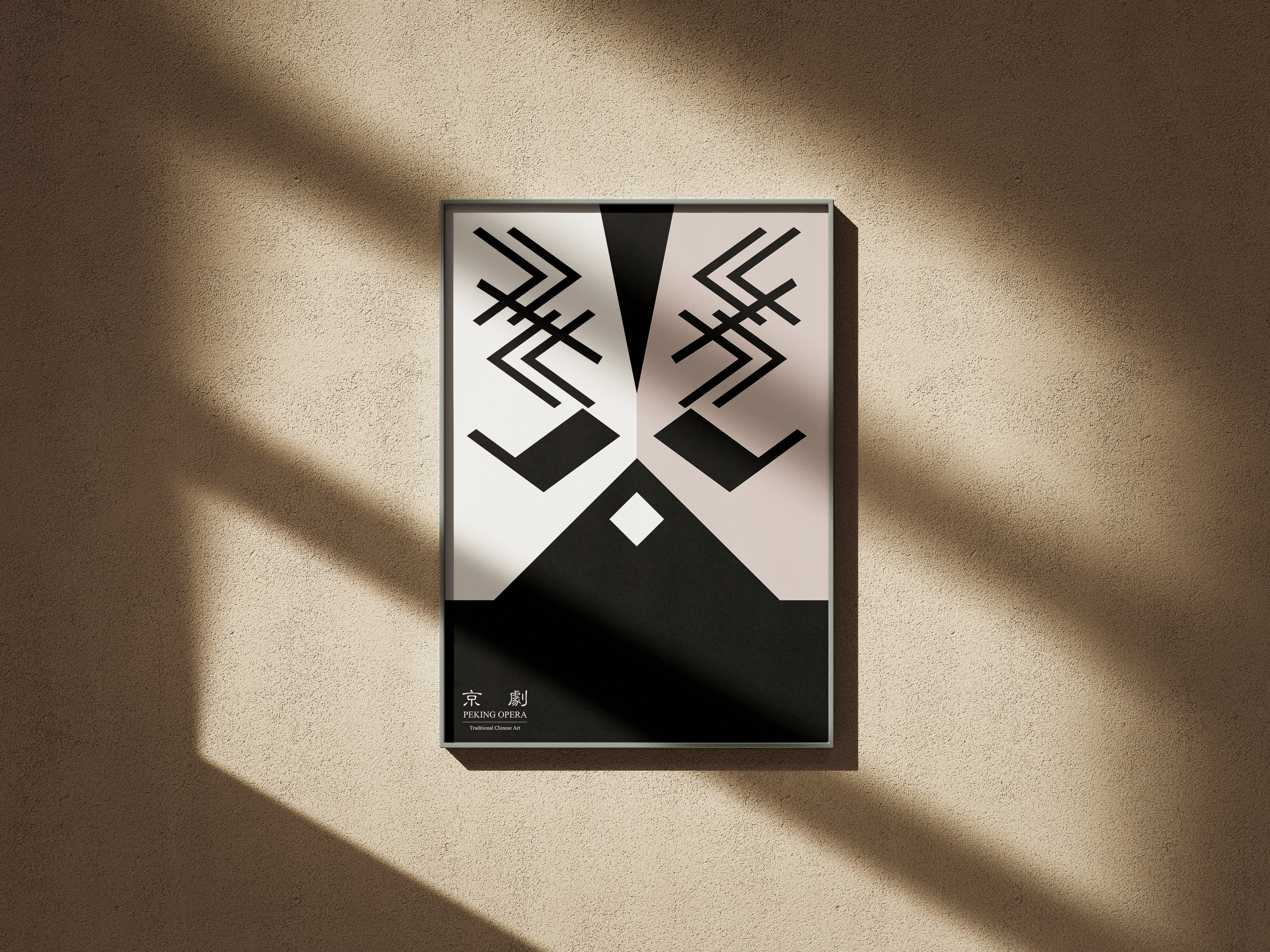

These four posters were created for the Beijing Opera Art International Poster Biennale.
In this series, I explored the four traditional role types in Peking Opera: Sheng, Dan, Jing, and Chou. These four can be recognized as the young man, the woman, the painted-face male (also known as Hualian), and the clown. A classic Peking Opera story inspired each poster: Xu Xian (The Legend of the White Snake), Yang Guifei (The Drunken Concubine), Xiang Yu (Farewell My Concubine), and Jin Xiangrui (Losing the Seal and Putting Out the Fire).

On the color palette, I chose traditional Chinese colors, each with a beautifully poetic name, such as Danfei (light red) and Chunmeihong (the red of spring Chinese plum blossoms). Since the entire poster series follows a minimalist style, I wanted the colors to remain as simple and elegant as possible. Personally, I love embedding small metaphors to my visual work, much like the Easter eggs hidden in a story. It brings me great joy as an artist to see audiences discover things like this in my work.
Sheng
![]()

The makeup of “Sheng” roles in Peking Opera is relatively simple, and it does not vary much between different plays. Unlike “Dan”, it cannot be distinguished through headwear. Therefore, after conducting research, I chose Xu Xian from The Legend of the White Snake as the visual reference.
 Design board
Design boardI emphasized the classic black hat as the central visual element. The hat’s black form, accented with white decorative details, helps balance the face's simplicity and adds visual depth to the composition. The red tone of the face evokes both the makeup and the shadow, a design choice that remains consistent across all the posters.

Dan is a general term for female characters in Peking Opera, so the entire poster uses arcs to emphasize her feminine figure and charm.
 Design board
Design boardThe inspiration for the “Dan” poster comes from Yang Guifei, a famous beauty in Chinese history. She was the emperor’s concubine, so she wore very elaborate jewelry and held a golden fan. As a result, her colors are the richest in the entire series. Summarizing and designing the complexity of her headdress was a challenge. In the end, I chose to use circles to represent the largest gemstones and pearls on the headdress, which helped enhance the details of the composition.

In contrast to “Dan,” the “Jing” poster uses only straight lines to construct the composition. The patterns of the makeup are organized and presented in a geometric form to emphasize the masculinity of the character.
 Design board
Design boardIn Peking Opera, the costumes of Jing and Dan are the most iconic. Jing roles have many different colors and styles of makeup, so many that they could bring a person with decision fatigue to tears.
The reason I ultimately chose Xiang Yu was the famous film Farewell My Concubine. Setting the film’s story aside, I found that Xiang Yu’s black-and-white makeup not only serves as a metaphor for his character but also fits perfectly with the minimalist design style of this series. Using only straight lines is also part of my interpretation of Xiang Yu’s personality.
In terms of color, pure black and white would be too monotonous and would not align with the visual style of the other posters. Therefore, based on the style established in the “Sheng” poster, I added a soft grayish pink to serve as the shadow on the character’s face.

Compared with the previous three character types, “Chou” is often overlooked, despite it being an important part of Peking Opera. Chou roles are usually comical characters, and similar roles can be found across the other three categories as well. Therefore, in terms of design, Chou incorporates a combination of visual elements. It freely uses circles and rectangles to construct the composition, highlighting the character’s diversity within the drama.
 Design board
Design boardJin Xiangrui is a very classic Chou character. In Peking Opera, he is portrayed as someone of high status, so he wears a hat that clearly signifies his position. Although this hat may have different detailed designs, the most iconic version features two round “wings” on both sides of the head. I combined these circular wings with the pattern of a coin, another traditional motif, and simplified the texture into a blue form.
